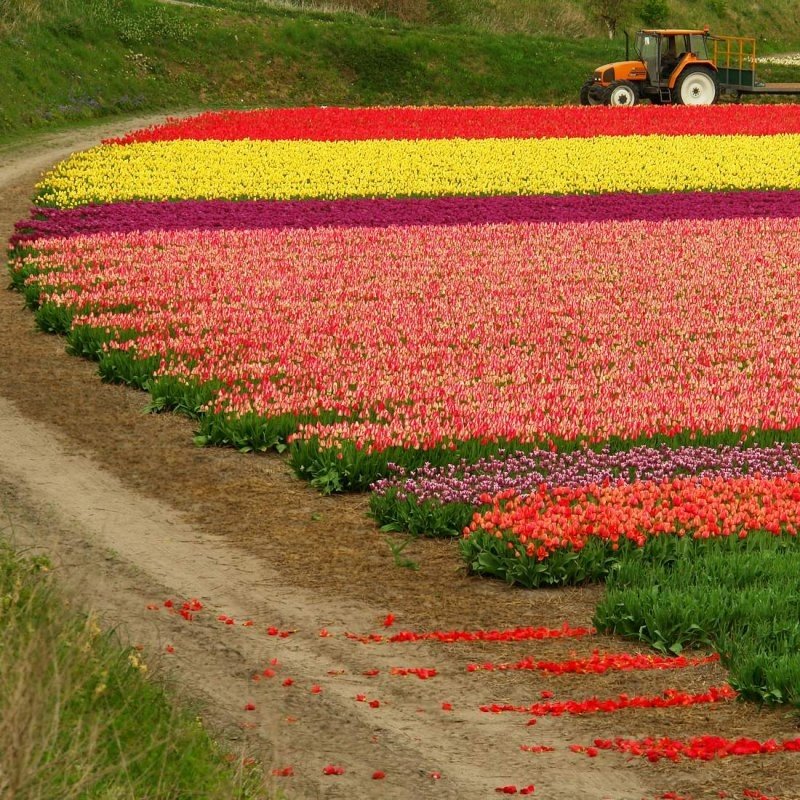|
|
Tulip Fields, Keukenhof, The Netherlands
|
Although it is unknown who first brought the tulip to Northwestern Europe, the most widely accepted story is that it was Oghier Ghislain de Busbecq, an ambassador for Ferdinand I of Germany to Suleyman the Magnificent of the Ottoman Empire. He remarked in a letter that he saw "an abundance of flowers everywhere; Narcissus, hyacinths and those in Turkish called Lale, much to our astonishment because it was almost midwinter, a season unfriendly to flowers." However, in 1559, an account by Conrad Gessner described tulips flowering in Augsburg, Bavaria in the garden of Councillor Herwart. Due to the nature of the tulip's growing cycle, tulip bulbs are generally removed from the ground in June and must be replanted by September to endure the winter. While possible, it is doubtful that Busbecq could successfully have had the tulip bulbs harvested, shipped to Germany, and replanted between his first sighting of them in March 1558 and Gessner's description the following year. As a result, Busbecq's account of the supposed first sighting of tulips by a European is possibly spurious.
Carolus Clusius planted tulips at the Imperial Botanical Gardens of Vienna in 1573 and later at the Leiden University's newly established Hortus Botanicus, where he was appointed director. There he planted some of his tulip bulbs in late 1593. As a result, 1594 is considered the official date of the tulip's first flowering in The Netherlands, despite reports of the flowers being cultivated in private gardens in Antwerp and Amsterdam two or three decades earlier. These tulips at Leiden would eventually lead to both Tulip mania and the commercial tulip industry in Holland.
Another account of the origin of the tulip in Western Europe is of Lopo Vaz de Sampaio, governor of the Portuguese possessions in India. After attempting to usurp power from the rightful governor, Sampaio was forced to return to Portugal in disgrace. Supposedly, he took tulip bulbs back to Portugal with him from Sri Lanka. This story does not hold up to scrutiny though because tulips do not occur in Sri Lanka and the island itself is far from the route Sampaio's ships would have likely taken.
Regardless of how the flower originally arrived in Europe, its popularity soared quickly. Carolus Clusius is largely responsible for the spread of tulip bulbs in the final years of the sixteenth century. He finished writing the first major work on tulips in 1592, and he made note of the variations in colour that help make the tulip so admired. While occupying a chair as a faculty member in the school of medicine at the University of Leiden, Clusius planted both a teaching garden and private plot of his ownwith tulip bulbs. In 1596 and 1598, Clusius suffered thefts from his garden, with over a hundred bulbs stolen in a single raid.
|
|









